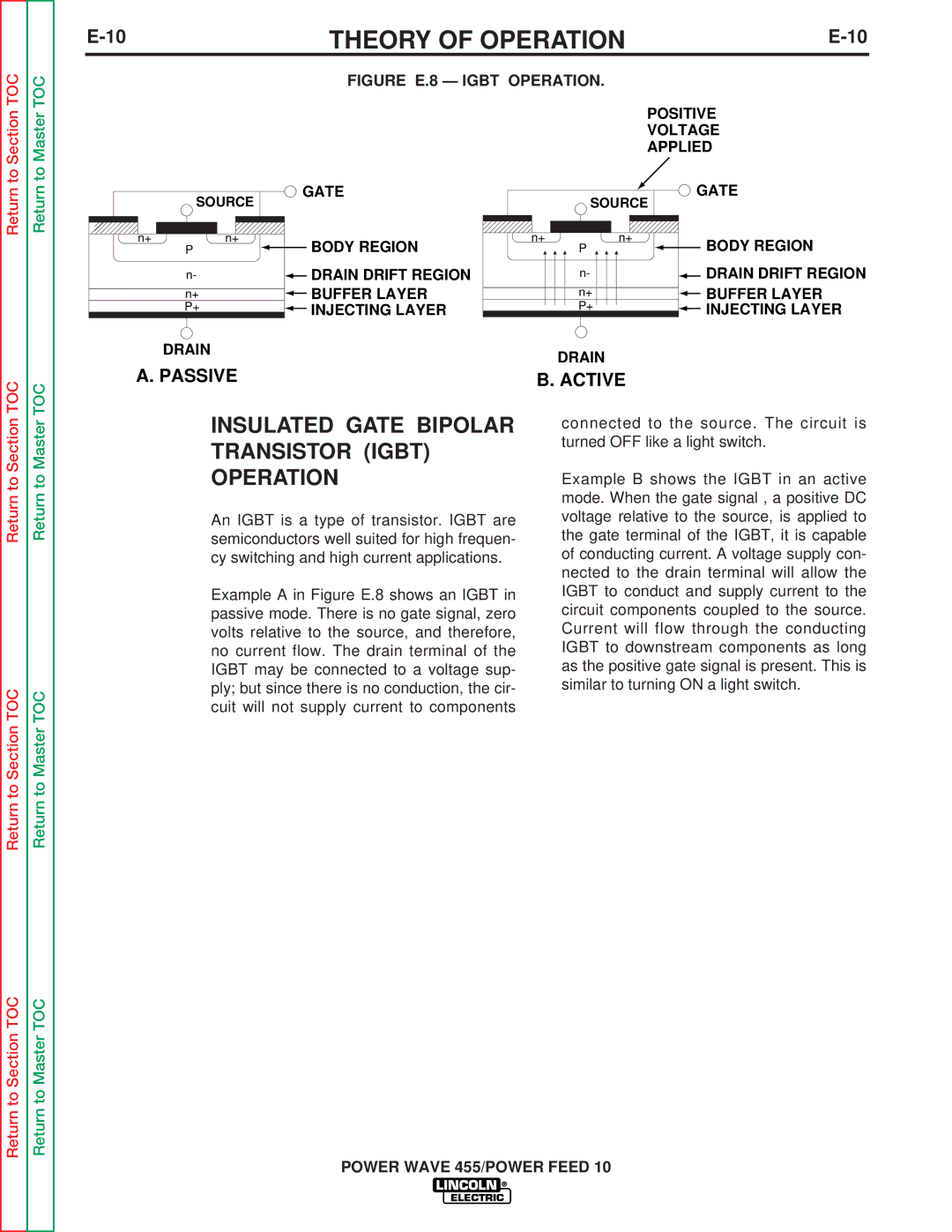
to Section TOC
to Master TOC
THEORY OF OPERATION |
FIGURE E.8 — IGBT OPERATION.
POSITIVE
VOLTAGE
APPLIED
Return
Return
SOURCE
![]() GATE
GATE
GATE |
SOURCE |
TOC
TOC
n+ | n+ |
P | BODY REGION |
n- | DRAIN DRIFT REGION | |
|
| BUFFER LAYER |
n+ | ||
P+ | INJECTING LAYER | |
|
| |
|
|
|
DRAIN
A. PASSIVE
n+ | n+ | BODY REGION |
P |
| |
n- |
| DRAIN DRIFT REGION |
n+ |
| BUFFER LAYER |
P+ |
| INJECTING LAYER |
DRAIN |
|
|
B. ACTIVE
Return to Master
Return to Master TOC
Return to Master TOC
INSULATED GATE BIPOLAR TRANSISTOR (IGBT) OPERATION
An IGBT is a type of transistor. IGBT are semiconductors well suited for high frequen- cy switching and high current applications.
Example A in Figure E.8 shows an IGBT in passive mode. There is no gate signal, zero volts relative to the source, and therefore, no current flow. The drain terminal of the IGBT may be connected to a voltage sup- ply; but since there is no conduction, the cir- cuit will not supply current to components
connected to the source. The circuit is turned OFF like a light switch.
Example B shows the IGBT in an active mode. When the gate signal , a positive DC voltage relative to the source, is applied to the gate terminal of the IGBT, it is capable of conducting current. A voltage supply con- nected to the drain terminal will allow the IGBT to conduct and supply current to the circuit components coupled to the source. Current will flow through the conducting IGBT to downstream components as long as the positive gate signal is present. This is similar to turning ON a light switch.
POWER WAVE 455/POWER FEED 10
